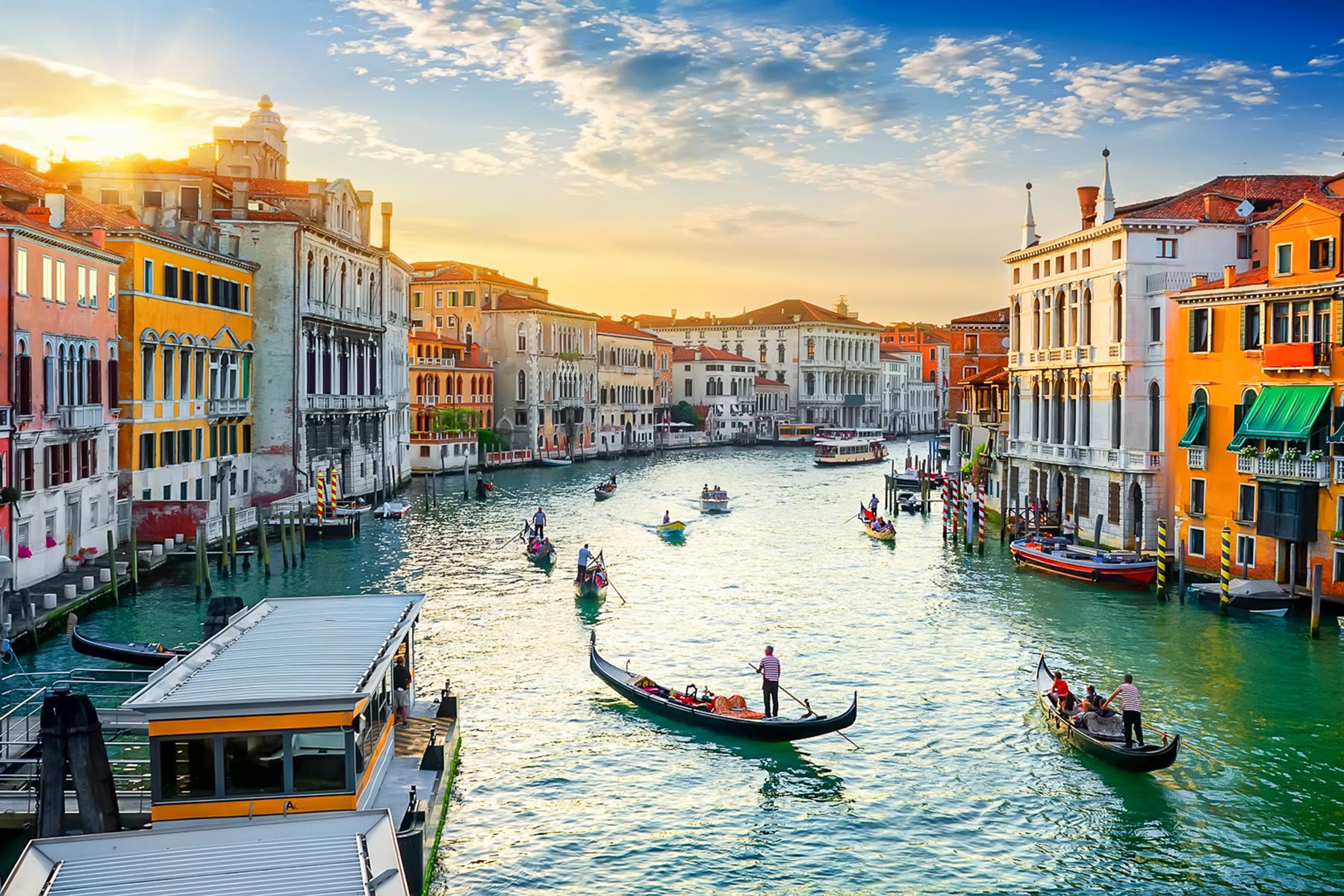A crossroads of East and West, Venice is a melting pot of architectural styles, with ever-captivating, oft-idiosyncratic examples of structures from several periods.
A tour of Venice is like a survey class on the history of Western architecture. The city’s glorious design history had humble origins, however. Refugees fleeing marauding barbarian tribes in the 4th and 5th centuries headed to the Venetian lagoon, where they built rough wooden huts on stilts above the marshy mudflats. Later, they learned how to work with the precarious shifting ground and to enlarge their structures by driving wooden piles into the mud.
Byzantine style, especially visible in palaces like Ca’ da Mosto, clearly shows the influence of the East. But it wasn’t until the Byzantine Empire’s hold over Venice ended in the 12th century that the architectural artistry for which Venice is known began. As the examples here show, however, this artistry continued through the Gothic, Renaissance, Baroque, Neo-Gothic, and beyond.




